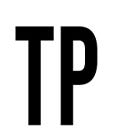How I Use BorisFX Optics Part 1
I am going to do a series of articles showing just one correction I made to an image using BorisFX Optics 2022.5 as a plug-in within Adobe Photoshop.
You can use Optics as a standalone or a plug-in but I almost always use it as a plug-in because then I can further refine my work on multiple layers in Photoshop. There are also layers in Optics but I am just more used to using Photoshop in that regard so that’s what I do. There’s no right or wrong way to do it.
I am not going to try to teach you how to use Optics in this series. I may do that in the future, but what I really wanted to show was the way I think it can help tweak small details in a photo that end up making big impact.
By the way — The image I am using in this article may or may not be finished someday and posted on my site. I just picked it because it was a good way to show off this particular trick.
Below you will see a screen shot of an image I am working on. It’s nearly finished but I am looking for just one or two things that make it special. For me, the details matter. Sometimes my corrections go unnoticed — at least consciously — and that’s okay with me. My photography is all about story telling and it’s up to me to tell the story and it’s up to everyone else to decide if it works. That second part is really none of my business. (Paraphrasing the late, great Henri Cartier-Bresson.)
Here’s the image before I loaded it into BorisFX Optics 2022.5.
The walls you see in this photo are actually part of a stock photo I licensed. I tend to use photographs as backdrops for my toy photography. The trick is printing them large enough and accurately enough so that they match the scale of the figures I am photographing. (Here I am photographing Hot Toys 1:6 scale action figures.) I have the photo backgrounds printed at Printique.com and I use a matte finish (to avoid reflections) and then have the picture mounted on foam core.
The problem with all photography is that we live in a 3D world but work in 2D medium. Anything we can do to add layers or the impression of layers will make the image more believable.
Since I thought the walls looked a little too smooth and too perfect in the stock photo, I wanted to age them a bit.
Here comes BorisFX to the rescue.
I am using the RENDER category in Optics and then I applied the CRACKED (VIGNETTED) preset from that category to get the impression that the walls had small cracks.
I applied that preset (which round trips to a layer I have created in Photoshop on top of the Background Layer.) This way I can make further refinements in Photoshop.
Before I show you the application of the preset — I will mention that each preset in BorisFX Optics 2022.5 can be manipulated in many, many ways. You can tweak the preset to your liking — even save it as a new preset if you think you’ll use it often and away you go.
Here’s the result with the Optics preset applied…
NOTE: If you’re looking at this image on a small screen — such as on a smart phone you might not see much difference.
I masked out the Jawas, the three main characters and the foreground sand so that the cracks would only appear on the walls. On the new layer I just erased the effect in the places I didn’t want it and left the other areas alone. This left the cracks on the wall, but not throughout the entire photo.
Then I simply dialed back the opacity to make the effect look a little less intrusive and more realistic. You can do this to taste. I believe that small improvements, combined together can make BIG impact so I dialed this preset down to about 35–40%.
I think it makes the wall more believable and that it makes the scene look more realistic.
CONCLUSION
I am completely convinced that had I not acquired BorisFX Optics 2022.5, and had I not learned how to use it, my toy photography would be nowhere near as engaging. I consider Optics to be an essential part of my toolkit. Even more important than Photoshop. It’s almost as important as my camera because I am learning how to pre-visualize what I can do in post with my RAW files and how that will help me tell a story.
The program is not hard to learn. Erik Kuna has a course at KelbyOne that teaches the basics. If I can do it you can do it.
Remember, toys are joy.
